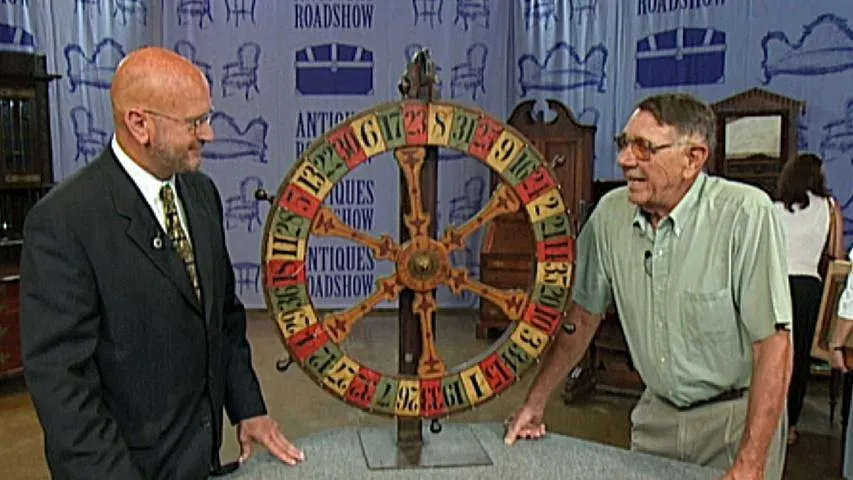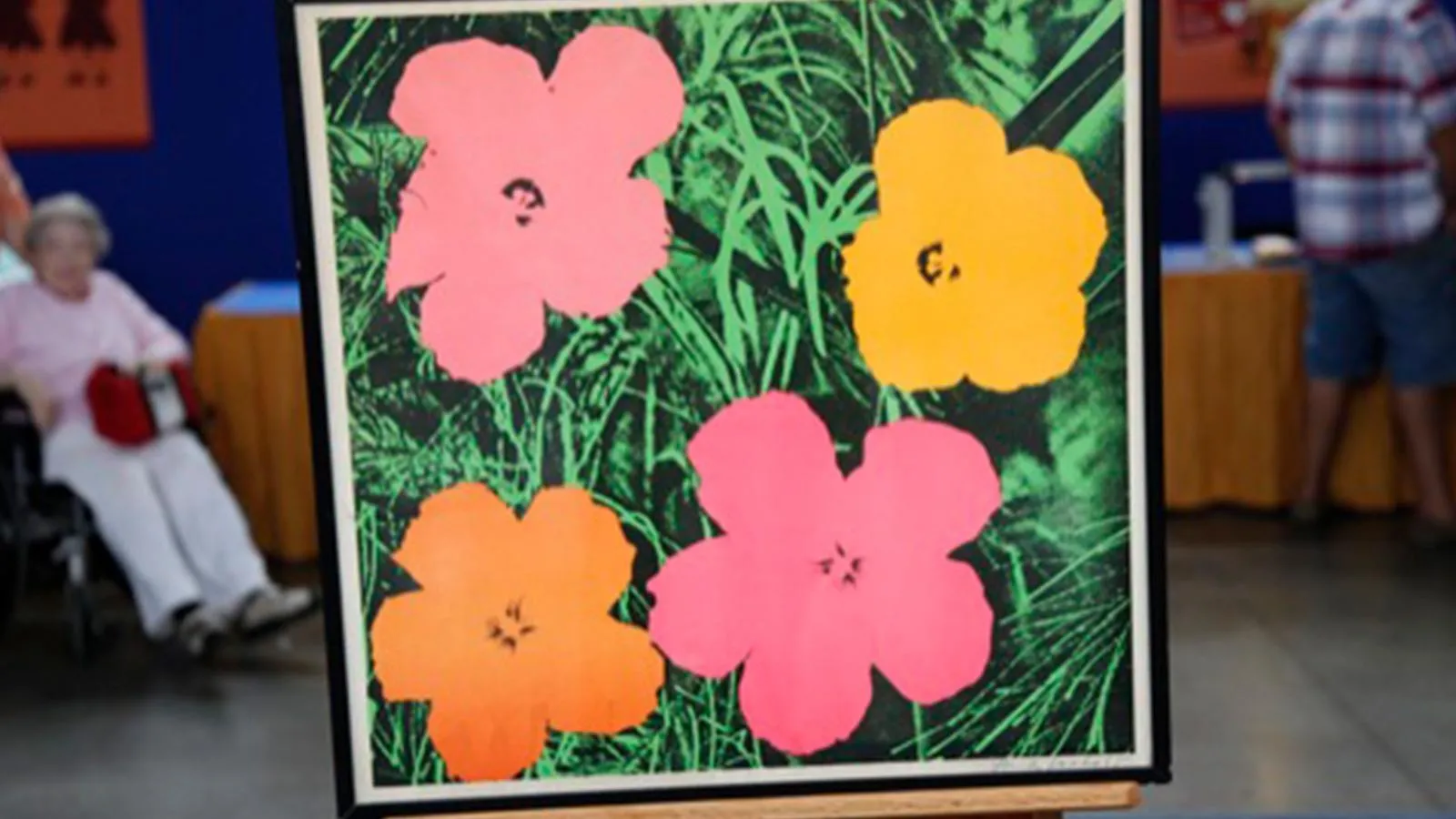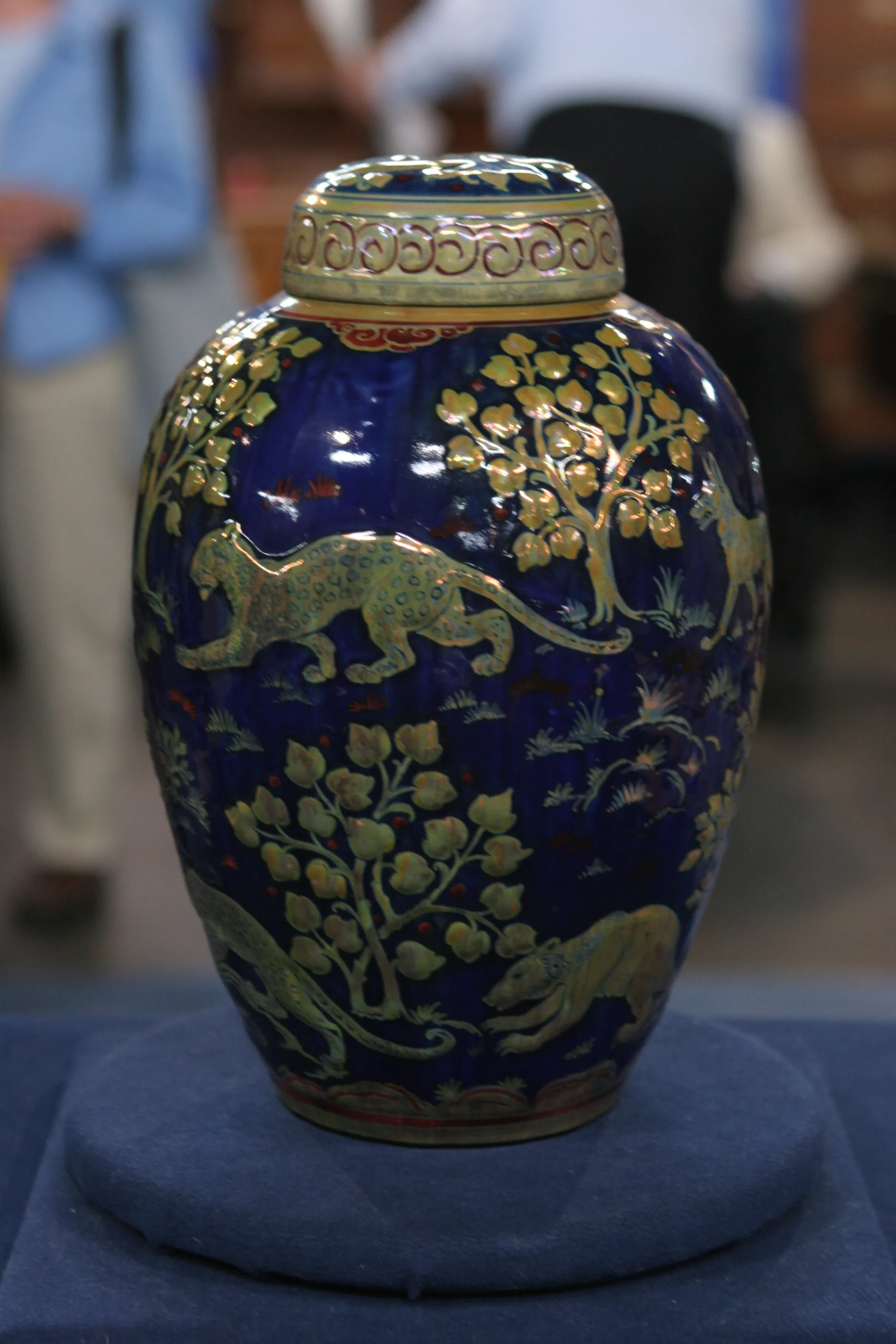GUEST: It was just in a box of books. I collect old books, so I looked through it. I just really was intrigued by all the, the colors and stuff, so I bought it.
APPRAISER: It's called "Color Standards and Color Nomenclature" by Robert Ridgway. Have you found anything out about Mr. Ridgway?
GUEST: I couldn't find out anything, so I gave the book to my daughter Ina.
APPRAISER: And?
GUEST: Yeah, she passed it on to me, and I did a little research and I found out a little bit about the author, and that he was a ornithologist...
APPRAISER: Right, he's identified here as curator of the Division of Birds...
GUEST: Okay, okay.
APPRAISER: ...United States National Museum. And I know another book by Ridgway about birds, "Birds of North and Middle America," but I didn't realize he had made this book. And this book, as he explains in his preface, was really an attempt as a scientist to standardize names of color in a similar way that weights and measures had been standardized. The beauty of the book are the plates.
GUEST: Yeah.
APPRAISER: There's a caution here printed that the plates should not be exposed to light or they could fade, and clearly, they haven't been, because they're beautifully vibrant. Now, in 1886, Ridgway published a book called "Color Nomenclature for Naturalists"...
GUEST: Hm.
APPRAISER: ...that illustrated 186 colors. This book has 1,115 colors.
GUEST: Yes.
APPRAISER: Plus, on each page there's, for guidance, control, white and black, as well.
GUEST: Hm.
APPRAISER: So there's over 1,400 pieces of color.
GUEST: Wow.
APPRAISER: All of which had to be cut out and mounted by hand. You've noticed these aren't printed on the page, but mounted.
GUEST: Mm-hmm.
GUEST: Yes.
APPRAISER: I'd hate to be painting my house based on these, because you get a whole great variety.
GUEST: (laughs) It is hard to choose your favorite one.
APPRAISER: Exactly. But I think we agreed that we both liked purple. So let's show that.
GUEST: Right, I do like purple.
GUEST: Yes.
APPRAISER: The Ridgway color system never caught on. So this is really, I think, a testament to Ridgway and his tenacity. No commercial publisher could have taken this on. I don't know if you've noticed, it was published by the author.
GUEST: Oh, no, I didn't see that. (guest murmurs)
APPRAISER: The edition must have been very small, certainly less than 500 copies, and probably closer to 300.
GUEST: Wow.
APPRAISER: So it maybe failed as a scientific work, but I think it succeeds as a work of art. How much did the box cost?
GUEST: No, I just bought the one book.
APPRAISER: Okay.
GUEST: It cost me a dollar.
APPRAISER: I would certainly think, in this condition, which is very good, this copy would sell for between $700 and $800.
GUEST: (laughing): Oh, you're kidding! Oh, my gosh. You're kidding!
APPRAISER: I'm not kidding.
GUEST: Wow.
GUEST: Oh, my gosh.
APPRAISER: And it's an exciting book because of the contents. I appreciate your bringing it in.
GUEST: That's amazing.
GUEST: Oh, I can't believe it.
GUEST: Oh, my God.












